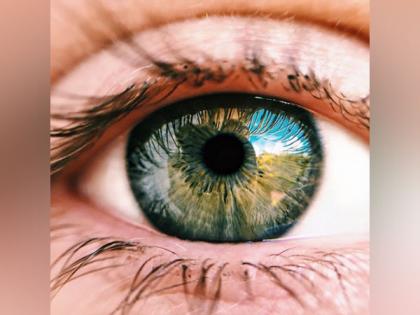Study reveals diabetes may be treated using eye implants
By ANI | Published: October 21, 2023 12:03 PM2023-10-21T12:03:20+5:302023-10-21T12:05:10+5:30
Washington DC [US], October 21 : Swedish researchers have developed a microscale device for implantation in the eye, potentially ...

Study reveals diabetes may be treated using eye implants
Washington DC [US], October 21 : Swedish researchers have developed a microscale device for implantation in the eye, potentially opening up new avenues for cell-based treatment of diabetes and other diseases.
A team from KTH Royal Institute of Technology and Karolinska Institutet created the 3D-printed device with the goal of encapsulating insulin-producing pancreatic cells with electronic sensors. The findings were published in the journal Advanced Materials by the researchers.
The collaboration between KTH and Karolinska Institutet allows microorganisms, specifically pancreatic islets or Langerhans islets, to be precisely positioned in the eye without the use of sutures. It opens up the possibility of cell-based therapy, such as treating Type 1 or Type 2 diabetes utilising the eye as a foundation.
According to Anna Herland, senior lecturer in the Division of Bionanotechnology at SciLifeLab at KTH and the AIMES research centre at KTH and Karolinska Institutet, the eye is excellent for this technology since it lacks immune cells that would respond negatively during the first stage of implantation. Because of its transparency, it allows for visual and microscopic examination of what occurs to the implant over time.
"The eye is our only window into the body, and it's immune-privileged," Herland said.
The device is designed as a wedge, about 240 micrometres long, allowing the structure to be mechanically fixed at the angle between the iris and the cornea in the anterior chamber of the eye (ACE). The work demonstrates the first mechanical fixation of a device in the anterior chamber of the eye.
"We designed the medical device to hold living mini-organs in a micro-cage and introduced the use of a flap door technique to avoid the need for additional fixation," said Wouter van der Wijngaart, professor in the Division of Micro- and Nanosystems at KTH.
In tests on mice, the device maintained its position in the living organism for several months, and the mini-organs quickly integrated with the host animal's blood vessels and functioned normally, Herland says.
Per-Olof Berggren, professor of experimental endocrinology at Karolinska Institutet contributed to the research with years of experience in transplanting islets of Langerhans to the anterior chamber of the eye in mice.
"The current unit is unique and will among other things form the basis for our continued work to develop an integrated microsystem for studying the function and survival of the islets of Langerhans in the anterior chamber of the eye," Berggren said.
"This is also of great translational importance, as transplantation of Langerhans islands to the anterior chamber of the eye in humans is subject to clinical trials in patients with diabetes."
Herland says the technology overcomes one obstacle to the development of cell therapies, including those for diabetes. Namely, there is no need for invasive methods to monitor the graft's function and to guide care in order to ensure long-term transplant success.
"Ours is a first step towards advanced medical microdevices that can both localize and monitor the function of cell grafts," she said
She said the design makes it possible to position mini-organs such as organoids and islets of Langerhans without limiting the supply of nutrients to the cells.
"Our design will enable future integration and use of more advanced device functions such as integrated electronics or drug release."
Disclaimer: This post has been auto-published from an agency feed without any modifications to the text and has not been reviewed by an editor
Open in app